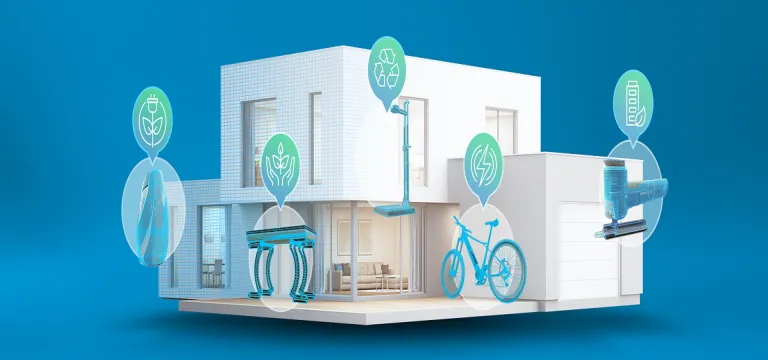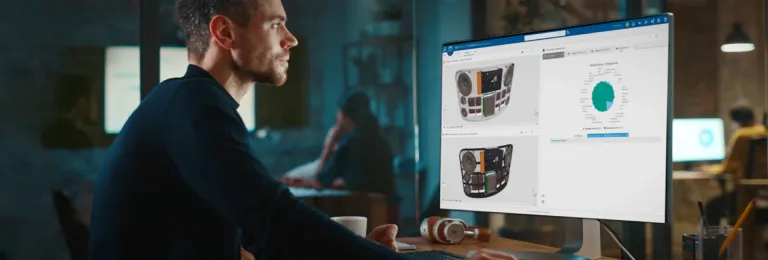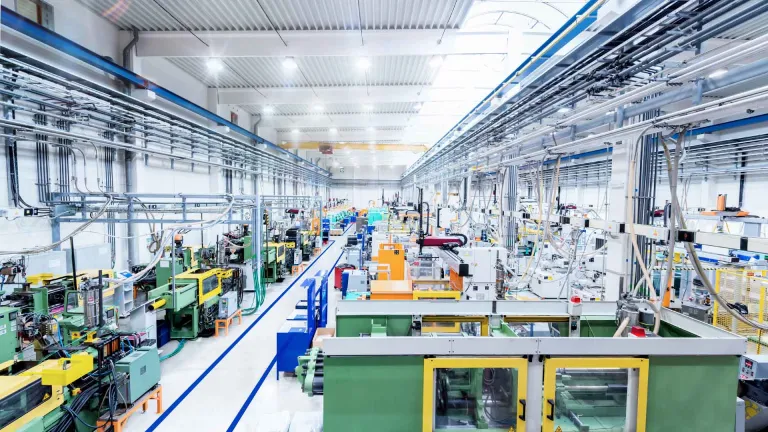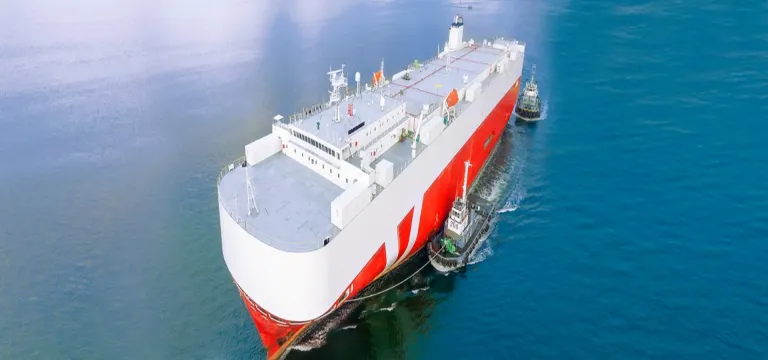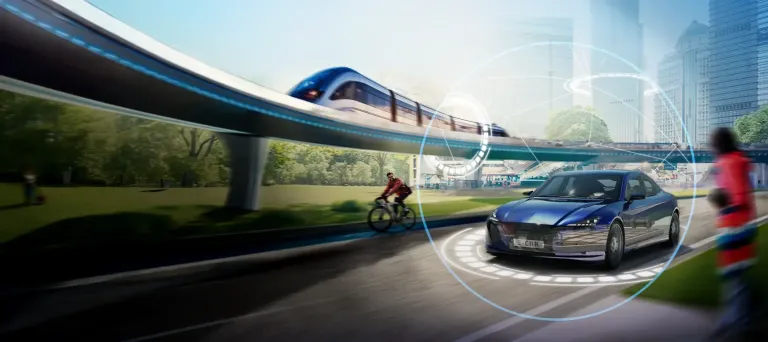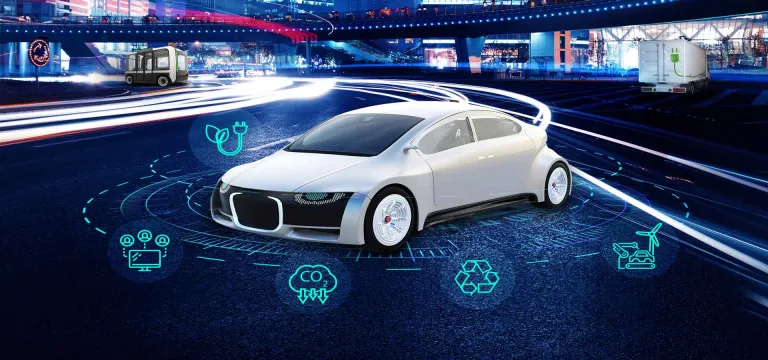Growing Focus On Improving Product Lifecycles
To tackle the global challenges of climate change, finite resources, and pollution,
manufacturing industries must reassess the current linear system of production and consumption and focus on business models where resources are kept in use and waste is minimized.
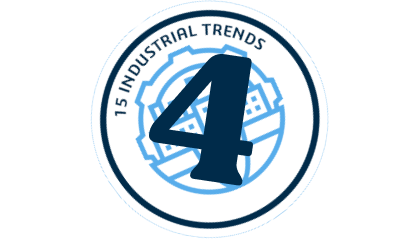
The climate crisis isn’t going anywhere – how are your products adapting?
What’s happening?
Of all the trends that encapsulate consumerism in the 21st century, the rise of fast fashion is one of the most eye opening.
Built on the concept of selling the latest designs at low prices and continuously introducing new collections, the pioneers of fast fashion, such as H&M and Zara, have come to dominate the high street.
What enabled this phenomenon were some of the core principles behind modern manufacturing – compressed production cycles relying on streamlined operations, just-in-time inventories, and rapid global supply chains.
But all this instant gratification comes with a price.
According to the global ‘A new textiles economy: Redesigning fashion’s future’ report, between 2000 and 2015 clothing sales doubled from 100 to 200 billion units a year, while the average number of times an item is worn before being discarded fell by 36%.
And yet only a fraction of this cast-off clothing will be reused. Less than 1% of the material used to produce clothing is recycled into new clothing, with an estimated 92 million tons of textile waste created each year. This represents a loss of more than USD 100 billion worth of materials.
The tide, though, is turning, and the industry is increasingly focused on extending product lifecycles. A 2022 McKinsey survey found 60% of fashion executives have already invested or plan to invest in closed loop recycling next year.
It is a belief echoed across industries: Businesses are cognizant of the need for change. “We see a strong demand across the industry to extend the lifecycle management for smart connected products,” says Stephane Sireau, Vice President, High Tech Industry, Dassault Systèmes. “This goes from the product development phases to overall product in operation, up to tracing its repurposing, second life, and recycling.”
Curious about how other manufacturing industries respond?
Respond to today's challenges with our bespoke solutions
Why does it matter?
Building an effective circular economy could radically improve the effectiveness of how we take, make, and use. According to the World Resources Institute, by effectively implementing circular economics practices, we could cut 3.7 billion tons from our annual carbon emissions alone.

One solution is the development of new recycling techniques, and all over the world, researchers are finding new ways of recycling plastics, new techniques to reduce the emissions intensiveness of operations, and new frameworks that prioritize product reuse.
But it’s not enough for the techniques to be available. Manufacturers also must take care to ensure that products and supply chains themselves are designed in a way that is conducive to recycling processes.
“Nature is the ultimate circular economy, and we need to work with it,” says Jonathan Dutton, Marketing Director, Sustainability at Dassault Systèmes. “Either we find a way to produce products that actually don't need recycling, that are reusable, or we build products that are designed to be recycled in different ways.”
Take plastic, for instance. While there are plenty of ways to recycle plastic, different plastics need to be exposed to different recycling procedures. A polythene bag and a car interior cannot be recycled the same way. But often, plastic products combine several materials in one item. Circular design would account for these challenges.
For example, circularity in plastic supply chains could entail designing a product where the same kind of plastic is used for multiple components, allowing the whole product to be recycled at a single stroke, minimizing the need for disassembly and multiple recycling streams.
“Whether we are using chemical recycling, mechanical recycling, or something else, effective processes rely on our understanding and harmonizing the different materials we're working with,” says Dutton.
Circularity can also be pursued through the implementation of more efficient and more optimized manufacturing processes, from packaging to heavy industry. For example, by improving how we roll or mill steel (itself a highly carbon intensive material), we can limit waste and reduce the need for new steel to be produced.
If manufacturers can learn to do this well, the rewards could be substantial. “By keeping materials products in the loop, we can minimize extraction of new resources, minimize creation of new waste products, and create an economy based on reuse, rather than use and discard,” says Dutton.
How can I prepare?
The transition to a business model based around circular economy principles can feel like a significant, and potentially risky, step. But implementation is really about information, and how you use it.
Lifecycle assessment (LCA), sometimes known as lifecycle analysis, is becoming a critical tool in understanding the value chain across a whole product lifespan, how it can be made more sustainable, reduce waste, and extend its life.
“LCA provides companies with a dedicated way to improve the carbon footprint of their products and operations – from early phases of product development to manufacturing to services,” says Sireau. “It allows companies to set environmental impact targets, and capture the relevant KPIs all along the lifecycle of the product to continuously minimize the environmental impact, all while delivering perfect customer experiences.”
The next step is to use LCA, alongside virtual modeling tools such virtual twins, to optimize end of life processes and make circular economy a ubiquitous reality. For example, disassembly teams need to know the exact chemical mix of a battery to calculate how those components can be recycled safely.
It can also help manufacturers test product recycling scenarios depending on specific markets, and design their manufacturing and logistics processes accordingly.
“Let’s look at glass bottles,” says Dutton. “In Germany, they reuse bottles. In France, they smash them up and melt them. That means you need to design different products, and different value chain processes for each of these different countries. LCA lets you identify these specifics and design your operations accordingly.”
Building more circular economies alone won’t help us manage our way to a perfectly sustainable future on its own. But moving beyond the take, make, and waste model, and learning from nature to live within the ecological boundaries of our planet is an indispensable first step.
Nature is the ultimate circular economy, and we need to work with it.
Other Trends
Discover more with our Manufacturing Industries
- Aerospace & Defense
- Consumer Packaged Goods & Retail
- Home & Lifestyle
- High-Tech
- Industrial Equipment
- Marine & Offshore
- Transportation & Mobility
Bridge the gap between the virtual and real world to accelerate from concept to operations.
Harness the power of data on a single integrated digital platform to optimize fleet maintenance, repair and overhaul (MRO) in Aerospace & Defense.
Discover how the 3DEXPERIENCE® platform drives innovation in the industry with CPG solutions for design, simulation and AI-driven forecasting.
Innovate every step of your sustainable packaging journey, driving profitability with an end-to-end strategy, powered by the 3DEXPERIENCE® platform.
Virtual Twin Experiences for Sustainable Innovation – Helping Manufacturers Improve Consumer Products
Integrate product innovation with sustainable design practices on a single platform to lower a product’s environmental footprint with Sustainable Innovation Intelligence.
Simplify and accelerate innovation to create more valuable consumer experiences.
Advanced digitalization helps companies achieve their carbon neutral goals by not only measuring their current environmental impact, but also the impact of future decisions.
Driving vehicle innovation toward the mobility of the future
See how the Virtual Twin strategy enables automotive innovators to develop high-performance, zero-emission, recyclable vehicles
THE WORLD NEEDS MANUFACTURERS
A MANIFESTO FOR CHANGE








